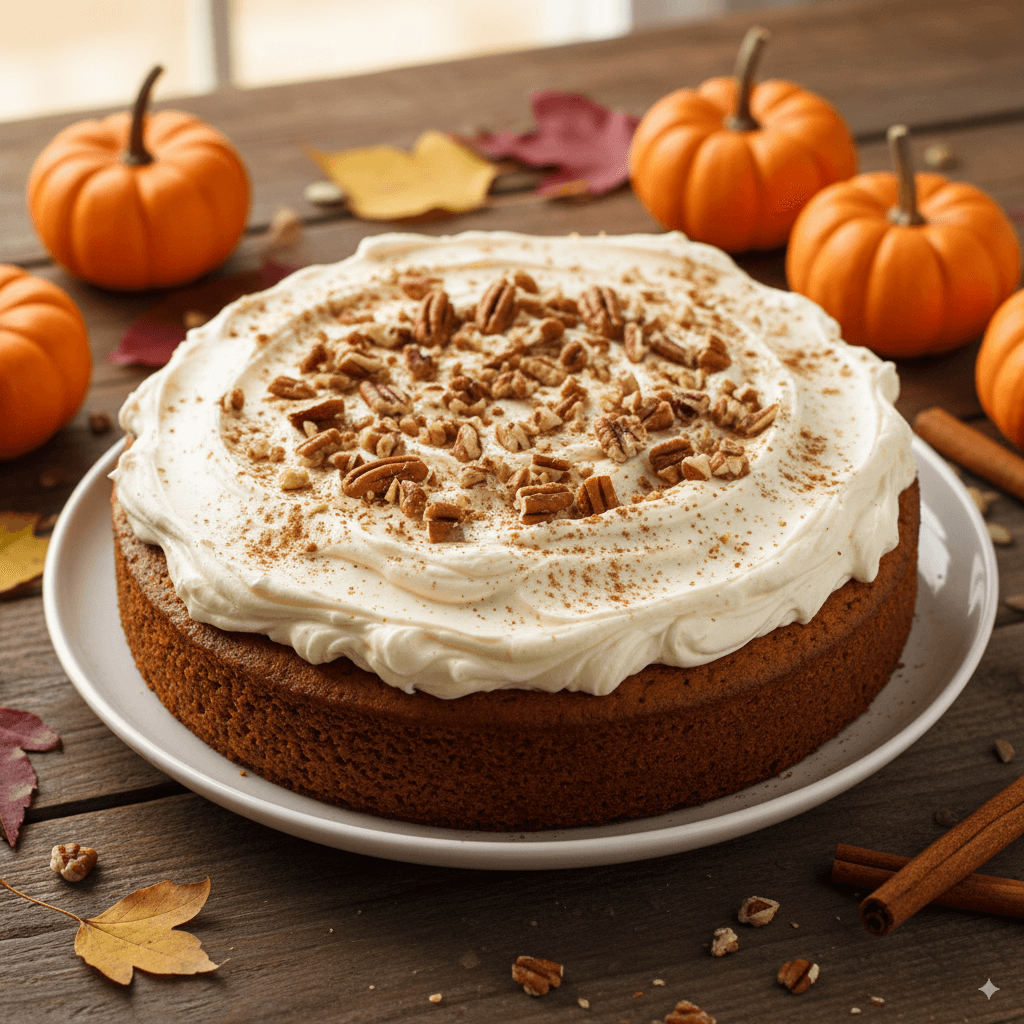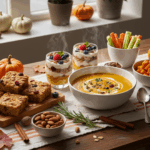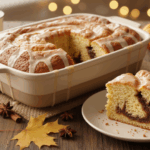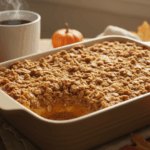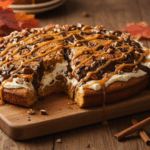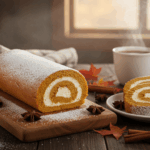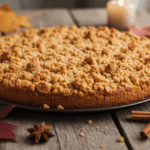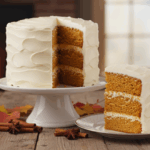Gluten-free pumpkin cakes offer a delicious way to enjoy seasonal flavors without gluten. These cakes can be moist, flavorful, and spiced perfectly to fit fall celebrations or everyday treats. They are suitable for people with gluten intolerance or those who prefer gluten-free options.
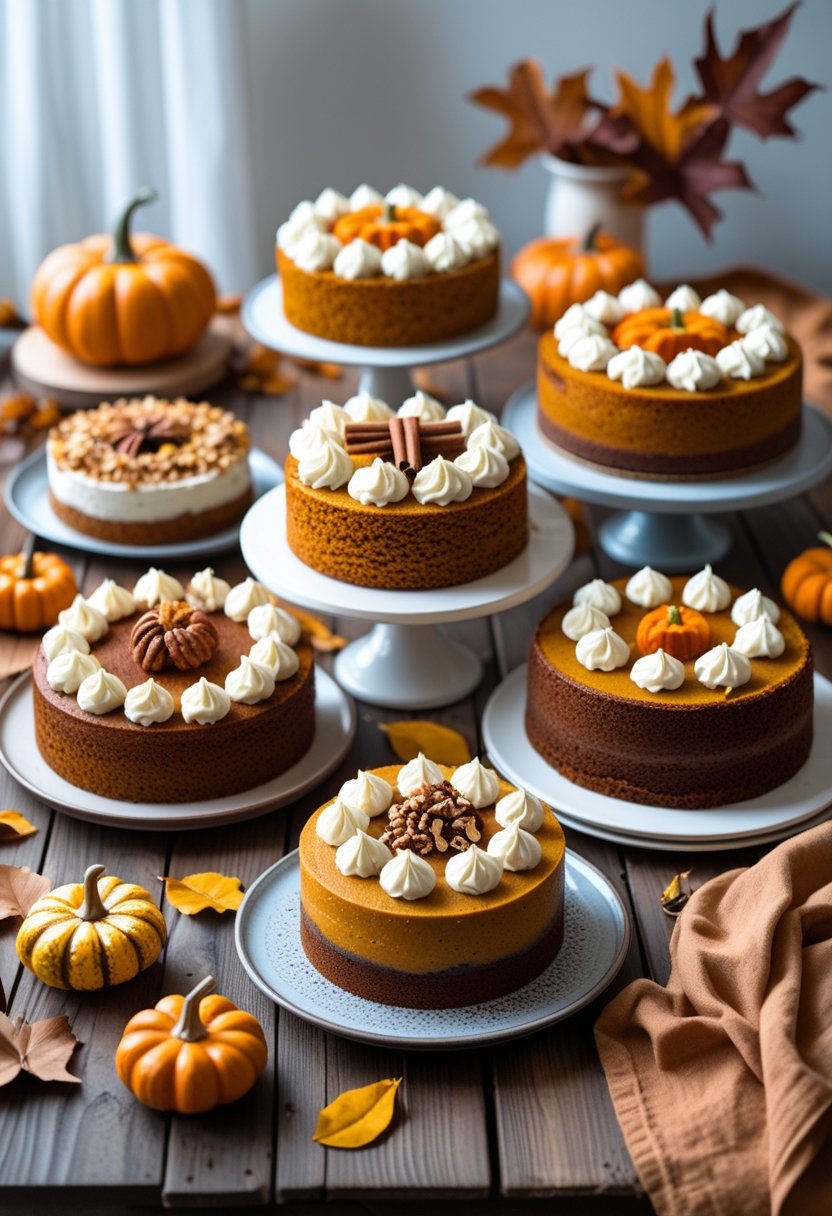
This article presents six gluten-free pumpkin cake recipes that vary in texture, ingredients, and frosting styles to suit different tastes and dietary needs. Each recipe balances pumpkin and spices while using different gluten-free flours and alternatives to keep the cakes tender and enjoyable.
1) Classic Gluten-Free Pumpkin Cake with Cream Cheese Frosting
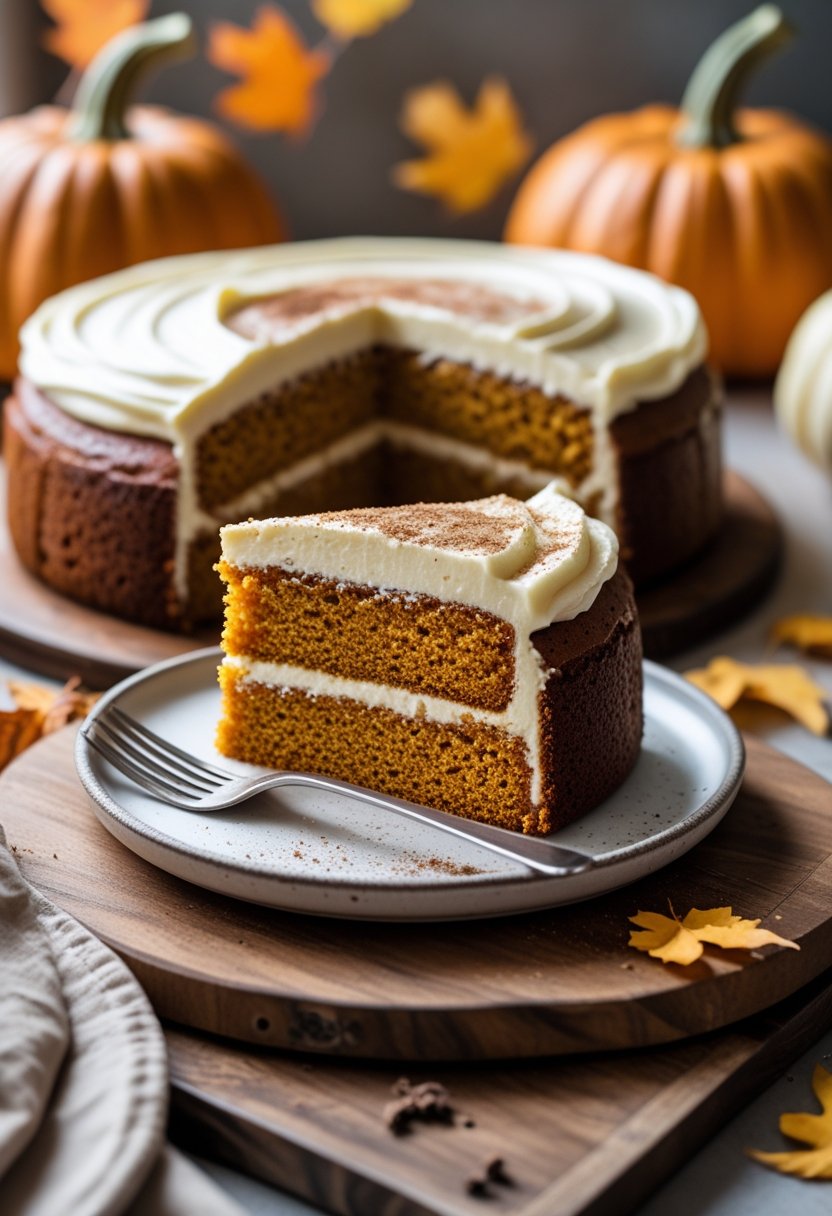
This classic gluten-free pumpkin cake has a moist texture and balanced flavors of pumpkin and warm spices. It uses gluten-free flour to keep the crumb light and tender, avoiding heaviness often found in gluten-free baking.
The cream cheese frosting adds a smooth, tangy finish that pairs well with the spiced cake. This frosting is simple to make with cream cheese, butter, and powdered sugar, yielding a creamy and rich topping.
The recipe works well in layers or a sheet pan, making it versatile for different occasions. It offers a traditional fall dessert flavor, suitable for those who need a gluten-free option without sacrificing taste or texture.
2) Healthy Pumpkin Cake with Yogurt and Cinnamon Frosting
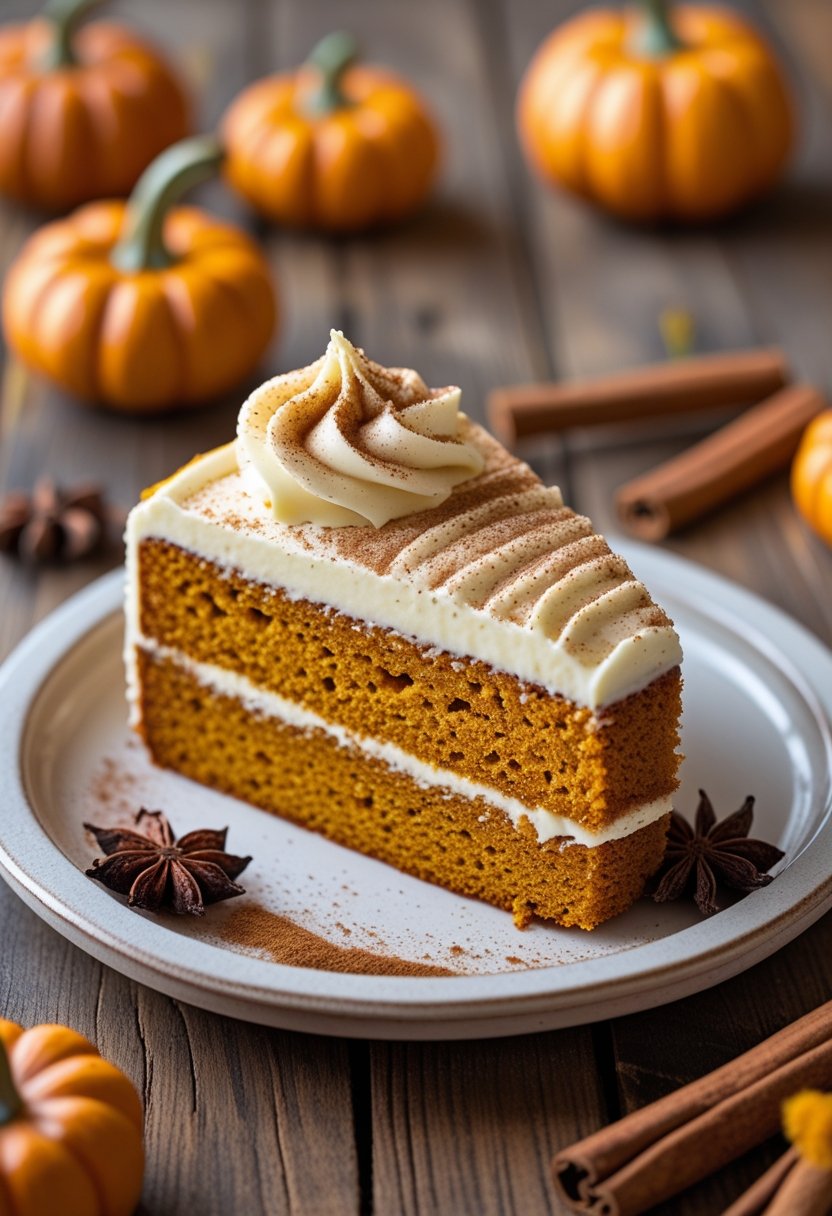
This pumpkin cake is naturally sweetened and gluten-free. It uses yogurt to keep the cake moist and tender. The use of warm pumpkin spices gives it a cozy flavor that fits well with fall.
The frosting is made with cream cheese and cinnamon, adding a rich but balanced sweetness. It is lighter than traditional frosting because it includes Greek yogurt, which also adds a slight tang.
The recipe is simple and can be made in one bowl. It is a good choice for those looking for a healthier dessert option without refined sugar or dairy.
This cake works well for holidays or any autumn gathering. It offers a moist texture with a subtle spice that pairs nicely with the creamy cinnamon frosting.
3) Vegan and Gluten-Free Pumpkin Cake with Whipped Topping
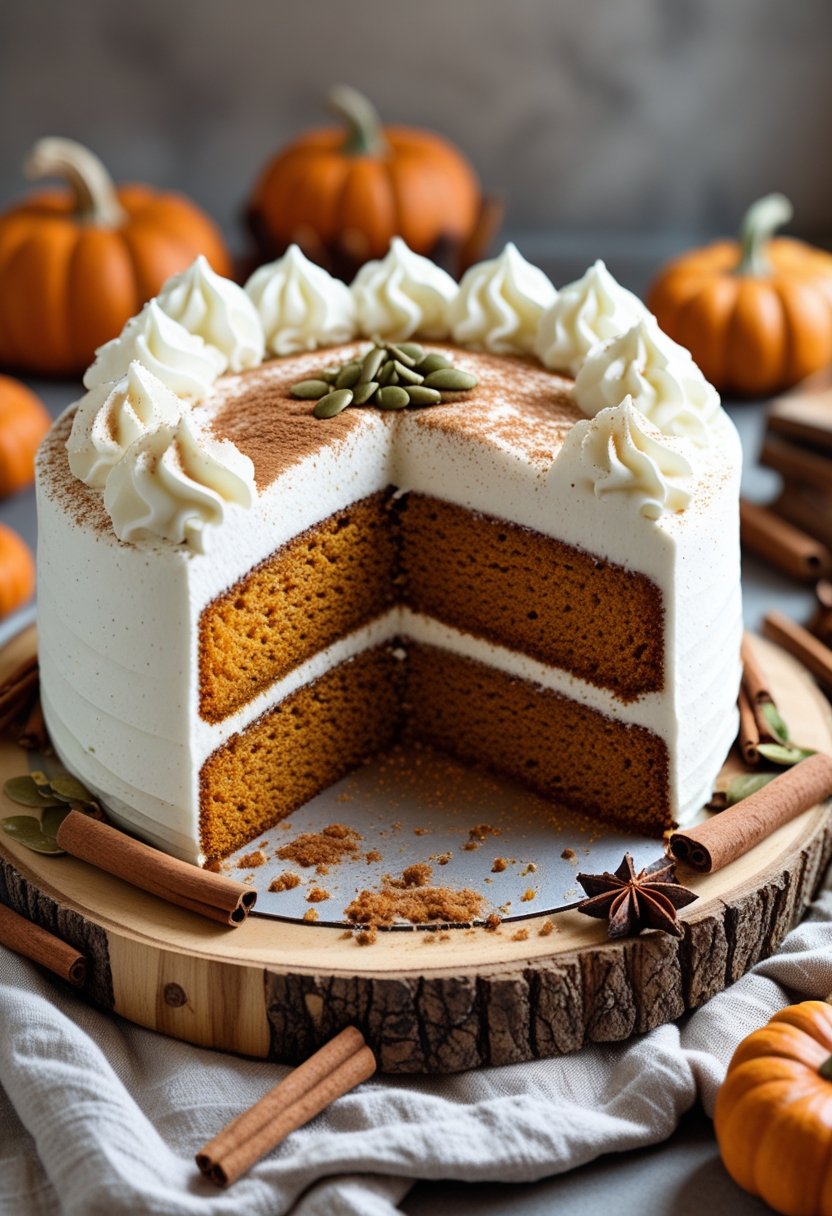
This pumpkin cake is both vegan and gluten-free, making it suitable for many dietary needs. It uses plant-based ingredients and gluten-free flours to create a moist, tender texture.
The whipped topping is dairy-free and light, often made with coconut cream or a vegan cream cheese substitute. It adds a smooth, creamy layer without weighing down the cake.
Warm spices like cinnamon and nutmeg are included to enhance the pumpkin flavor. The cake typically bakes quickly, making it a convenient choice for a fall dessert.
This recipe avoids eggs and dairy, using alternatives such as applesauce or flax eggs to bind the ingredients. It can be made in one bowl, simplifying preparation and cleanup.
The combination of gluten-free flour and vegan ingredients ensures the cake has a soft crumb and rich taste. It is an option for those avoiding common allergens but still wanting a classic pumpkin treat.
4) Gluten-Free Pumpkin Bundt Cake without Butter
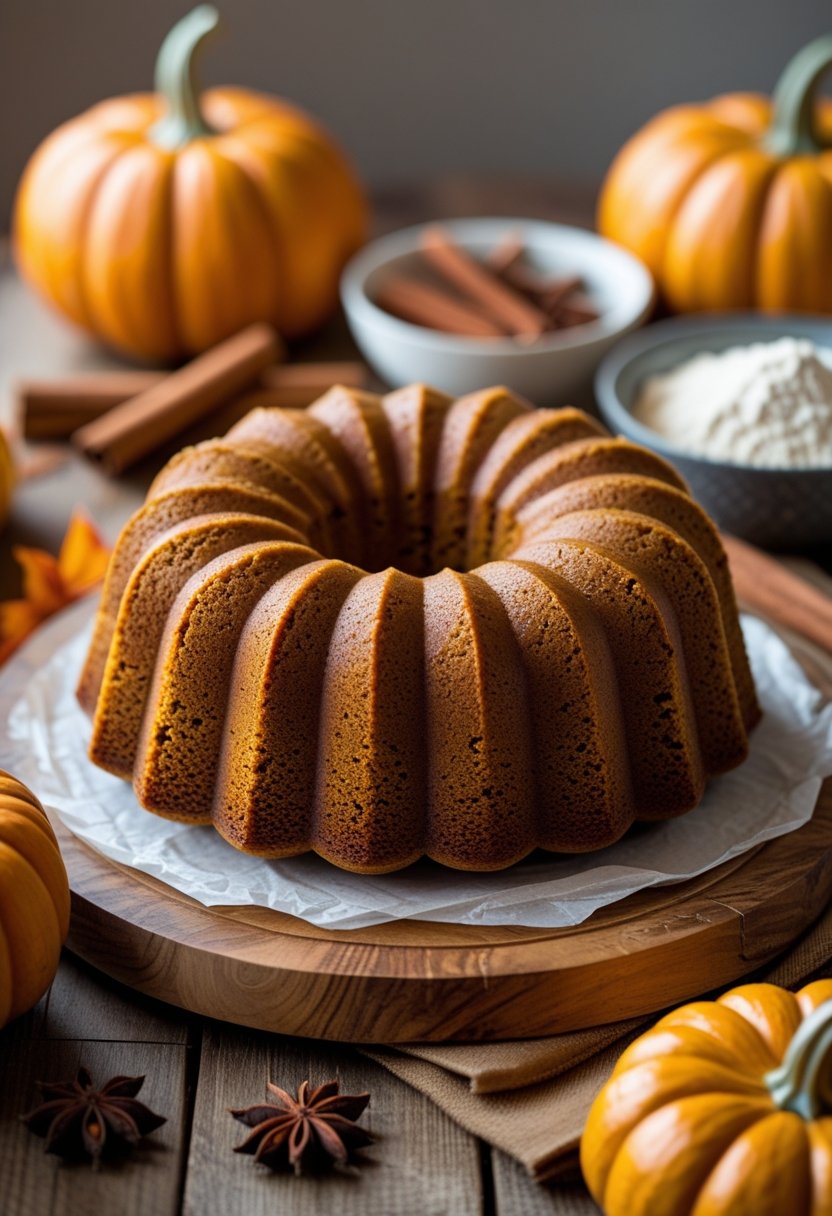
This gluten-free pumpkin bundt cake recipe skips butter for a different texture and flavor. Instead, it uses oil or another dairy-free fat to keep the cake moist and tender. This approach works well for those avoiding dairy or looking for a lighter option.
The cake is still rich with pumpkin flavor and spices like cinnamon and nutmeg. It bakes up fluffy and soft, making it a good dessert for fall or any time. Some versions add a simple glaze or frosting, but the cake itself stands out on its own.
Using oil instead of butter also makes the recipe quicker and easier to mix. The batter comes together in one bowl, saving time on cleanup. This cake is a solid choice for those wanting a dairy-free, gluten-free pumpkin dessert that is simple and satisfying.
5) Paleo-Friendly Gluten-Free Pumpkin Cake with Cinnamon Frosting
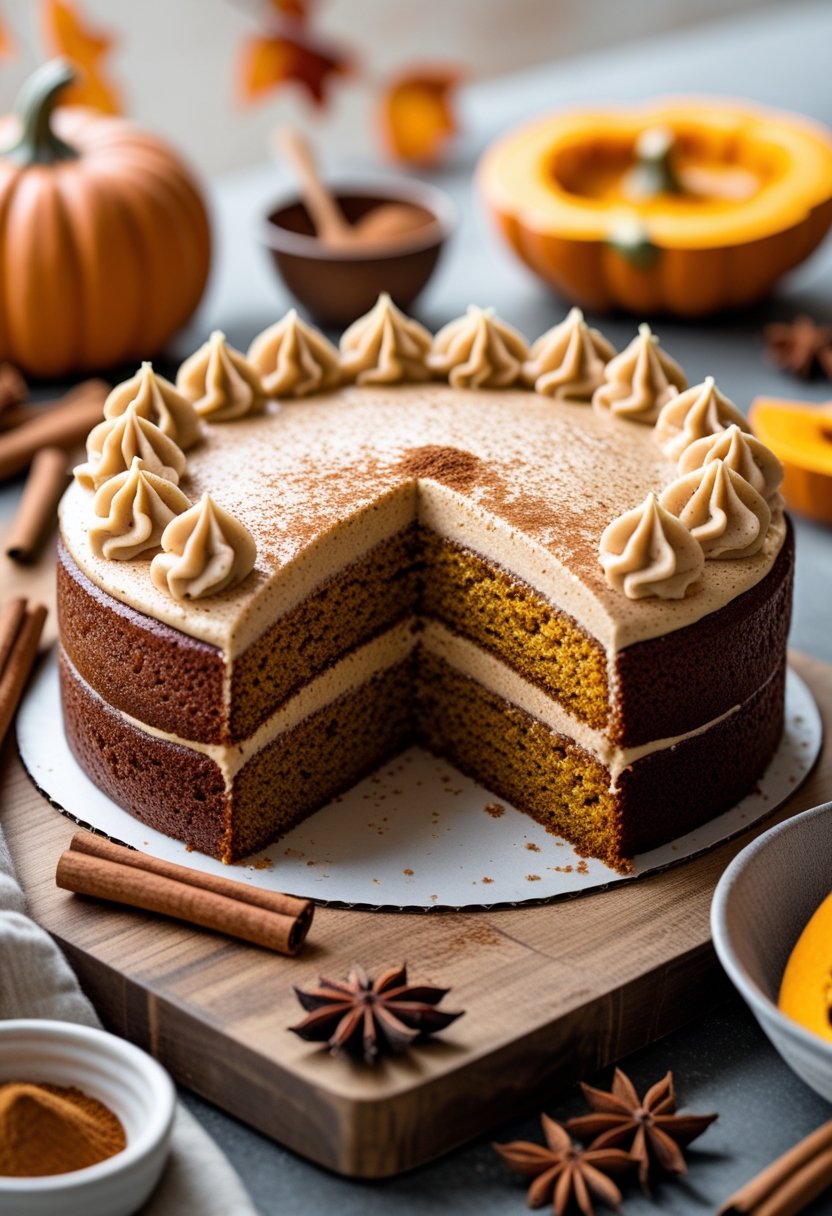
This pumpkin cake is a good choice for those following a paleo diet while avoiding gluten. It uses natural, wholesome ingredients and is free from dairy and refined sugars. The texture is moist and tender thanks to the use of alternative flours like almond or coconut flour.
The cinnamon frosting adds a warm, spicy flavor that pairs well with the pumpkin spices in the cake. The frosting is often made dairy-free and uses natural sweeteners such as maple syrup or honey. This keeps the dessert light and suitable for various dietary needs.
The cake is simple to prepare and does not require complicated steps. It works well for fall gatherings or as a healthy treat. This recipe offers a balance of flavor and nutrition for those who want a pumpkin dessert that fits a paleo and gluten-free lifestyle.
6) Sheet Pan Gluten-Free Pumpkin Cake with Maple Cream Cheese Frosting
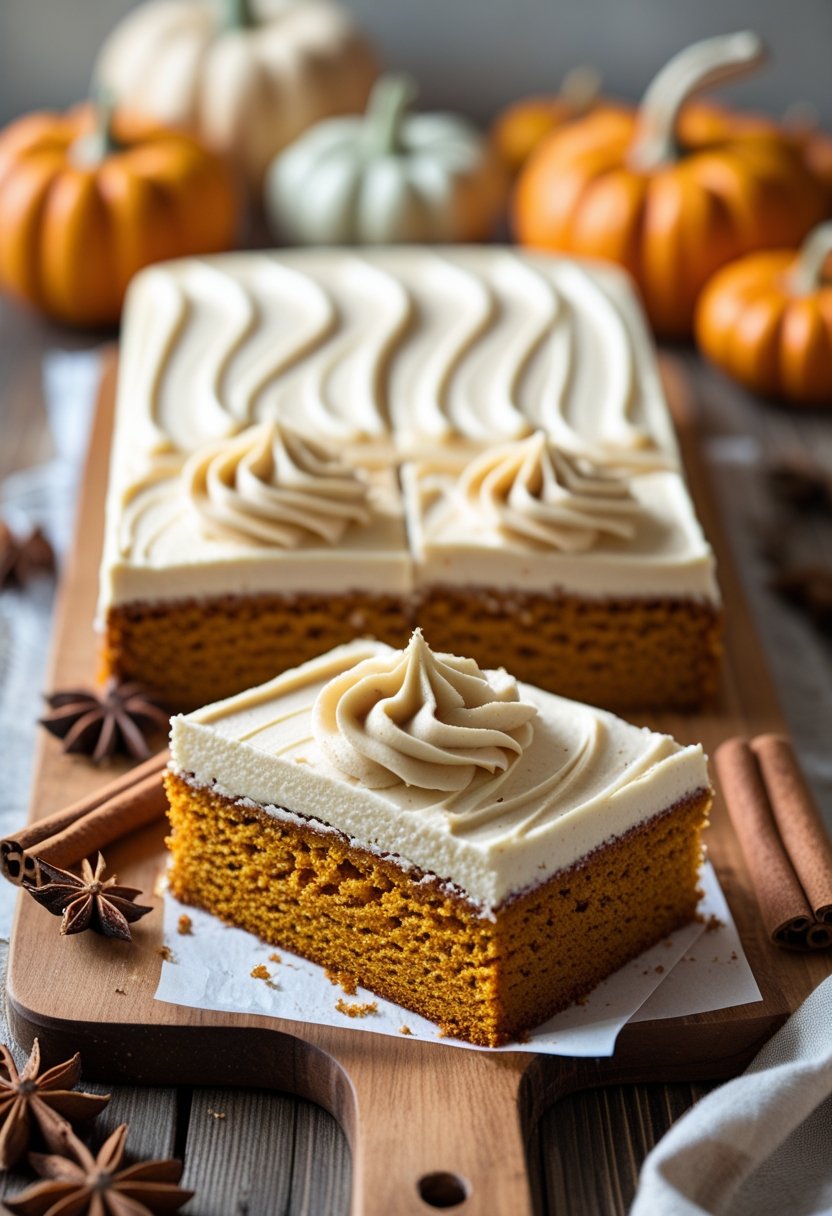
This sheet pan pumpkin cake is a great choice for anyone looking for a simple, gluten-free dessert. It uses basic ingredients and can be baked all at once in a large pan, making it easy to serve a crowd.
The cake is moist and tender, with warm pumpkin spices that bring out fall flavors. The texture is soft, and it avoids the heaviness sometimes found in gluten-free baking.
It is topped with a smooth maple cream cheese frosting. The frosting adds a mild sweetness and a slight maple flavor that pairs well with the pumpkin cake.
This recipe works well for holidays or casual gatherings. It is dairy-free and nut-free if you choose suitable ingredients, which makes it accessible for many diets.
Using canned pumpkin puree keeps the cake moist while providing the right pumpkin taste without extra sweetness. The baking process is straightforward, perfect for home bakers of all skill levels.
Essential Tips for Baking Gluten Free Pumpkin Cakes
Baking a gluten-free pumpkin cake requires careful choices in flour, moisture, and flavor to achieve the best texture and taste. Attention to these factors helps avoid common problems like dryness or heaviness. Using the right ingredients and techniques can make the cake moist, flavorful, and tender.
Choosing the Right Gluten Free Flours
Gluten-free flours behave differently than wheat flour, so choosing the right blend is important. A mix of gluten-free all-purpose flour, almond flour, or oat flour often gives better structure and crumb. Almond flour adds moisture and richness, while rice or sorghum flour provide a lighter texture.
Many gluten-free recipes use a store-bought blend that includes xanthan gum or guar gum, which help bind the ingredients and improve texture. Without these, the cake risks being crumbly or falling apart.
It’s best to avoid using just one type of flour. Combining flours balances density and moisture for a tender crumb. Testing blends or following reliable recipes with specified flour combinations gives a more consistent result.
Balancing Moisture and Texture
Pumpkin itself adds moisture, but gluten-free cakes often need extra liquids or fats to stay soft. Oil or shortening is often preferred over butter because it keeps the cake light and moist without making it dense.
Adding yogurt or applesauce can improve moisture and add natural sweetness without making the cake heavy. Avoid too much liquid, which can make the batter loose and lead to a soggy cake.
Egg substitutes or additional eggs affect texture too. For vegan or egg-free options, flax or chia eggs provide some binding but may slightly change crumb firmness.
Flavor Enhancements for Pumpkin Cakes
Pumpkin has a mild flavor, so spices are essential to enhance the taste. Classic spices include cinnamon, nutmeg, cloves, and ginger. Using fresh spices instead of pre-mixed pumpkin pie spice often results in a stronger, fresher flavor.
Sweeteners can balance pumpkin’s earthiness. Brown sugar or maple syrup adds warmth and depth, while honey works well in dairy-free versions.
Adding vanilla extract or a splash of citrus juice can brighten the flavor. Toppings like cream cheese frosting or whipped coconut cream pair well with the spices and pumpkin notes.
Storing and Serving Gluten Free Pumpkin Cake
Proper storage is key to keeping gluten free pumpkin cake moist and flavorful. The way it is served also affects how well its flavors are enjoyed. These details help maintain taste and texture from the first slice to the last.
Best Storage Practices
Gluten free pumpkin cake should be stored in an airtight container to prevent drying out. It can last up to 3-4 days at room temperature. If the kitchen is warm, refrigeration is better to avoid spoilage.
For longer storage, the cake freezes well. Wrap it tightly in plastic wrap and then in foil or place it in a freezer-safe bag. It can keep in the freezer for up to 2 months.
When ready to eat, thaw the cake in the fridge overnight. Reheat briefly in the microwave or oven to restore moisture and softness.
Serving Suggestions for Optimal Flavor
Serving gluten free pumpkin cake slightly chilled or at room temperature brings out its spice and pumpkin flavors best. Warmed frosting or a light dusting of cinnamon or powdered sugar enhances the taste.
Pairing the cake with whipped cream or cream cheese frosting adds richness without overpowering the natural pumpkin taste. For those avoiding dairy, coconut whipped cream is a good alternative.
Cut the cake into small slices to keep it moist on the plate. Leftover slices can be wrapped individually to maintain freshness when stored.
Frequently Asked Questions
Many gluten-free pumpkin cake recipes use alternative flours, dairy substitutes, and different oils to achieve moistness and flavor. Adjustments for texture and baking time are common when modifying classic recipes or making bundt cakes.
What are some healthy alternatives for ingredients in gluten-free pumpkin cake recipes?
Yogurt or applesauce can replace oil or butter for a lower-fat option. Coconut sugar or honey can substitute refined sugar. Nut-free flours like rice or oat flour work for those with allergies.
How do I incorporate almond flour into gluten-free pumpkin cake?
Almond flour adds moisture and a mild nutty flavor. It’s best combined with other gluten-free flours for structure. Use it to replace part of the flour, usually about 25-50%, to avoid a dense cake.
Can the King Arthur Gluten-Free recipe be used to make pumpkin cake?
Yes, the King Arthur Gluten-Free Baking recipe can be adapted for pumpkin cake by adding pumpkin puree and spices like cinnamon, nutmeg, and cloves. It generally produces a moist and flavorful cake.
What modifications are needed to bake a gluten-free pumpkin bundt cake?
A bundt cake often requires extra moisture. Adding ingredients like yogurt or pumpkin puree helps. It might need longer baking time at a slightly lower temperature to bake evenly without drying out.
Is it possible to use olive oil in a gluten-free pumpkin cake, and how does it affect the taste?
Olive oil can be used and keeps the cake moist. It may add a mild fruity or peppery flavor, which pairs well with pumpkin and warm spices but could stand out in milder recipes.
What is the difference between gluten-free pumpkin cake and gluten-free pumpkin bread in terms of preparation?
Pumpkin cake is usually lighter, sweeter, and topped with frosting. Pumpkin bread tends to be denser, less sweet, and is baked in a loaf pan. The ingredient ratios differ, with pumpkin bread having more flour and less sugar.
